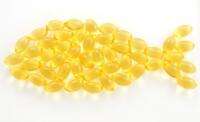Danes' vitamin D levels are determined by their genes

Certain genetic variations increase the risk of having a lower level of vitamin D. This is the finding of a PhD project from the National Food Institute, Technical University of Denmark, which has examined the effect of eating vitamin D fortified foods or receiving artificial UVB irradiation during the winter months. The fortified diet and artificial sunlight had less of an effect on vitamin D status in people with certain genetic variations. The results can be used to identify people who are genetically predisposed to having lower levels of vitamin D.
Throughout life vitamin D is essential to bone health. Some studies have also linked adequate levels of vitamin D with a lower risk of cardiovascular, inflammatory and autoimmune diseases, certain cancers and death.
During the summer months the majority of Danes get sufficient amounts of vitamin D from sunlight. Vitamin D is synthesized when the sun's UVB rays hit the skin. During the winter months in Denmark the sun's UVB rays aren't strong enough for this process to take place and as such Danes have to rely on their diet and dietary supplements to meet their need for vitamin D.
Genes determine vitamin D status
In her PhD project Janna (Ioanna) Nissen from the National Food Institute has studied the relationship between 25 different genetic variations in seven different genes and the level of vitamin D in her research subjects' blood in late summer and at the end of winter respectively. She has also studied the effect of eating vitamin D fortified bread and milk or receiving artificial UVB irradiation had on the research subjects' vitamin D status compared to their genes.
Her studies show that the two genes CYP2R1 and GC influence the level of vitamin D in a person's blood.
"The results show that carriers of all the genetic risk variants have the lowest vitamin D levels in late summer, the largest drop in vitamin D levels after eating fortified bread and milk during winter and the smallest increase after artificial UVB irradiation compared to carriers of fewer or no genetic risk variants," Janna Nissen explains.
Genetic predisposition
"The study results can be used to identify genetically predisposed individuals who have an increased risk of having lower vitamin D levels. This will be possible in the future by means of a genetic test," Janna Nissen says.
None of the research subjects were vitamin D deficient. At present it is not clear whether or not individuals who are genetically predisposed to lower levels of vitamin D without being vitamin D deficient have an increased risk of developing vitamin D related diseases later in life.
More information: Janna Nissen et al. Common Variants in CYP2R1 and GC Genes Predict Vitamin D Concentrations in Healthy Danish Children and Adults, PLoS ONE (2014). DOI: 10.1371/journal.pone.0089907
Common genetic variations in the CYP2R1 and GC genes are determinants of vitamin D status in Danes (pdf) - www.food.dtu.dk/english/-/medi … ationer/Pub-2015/PhD%20Thesis%20Janna%20Nissen.ashx?la=da

















